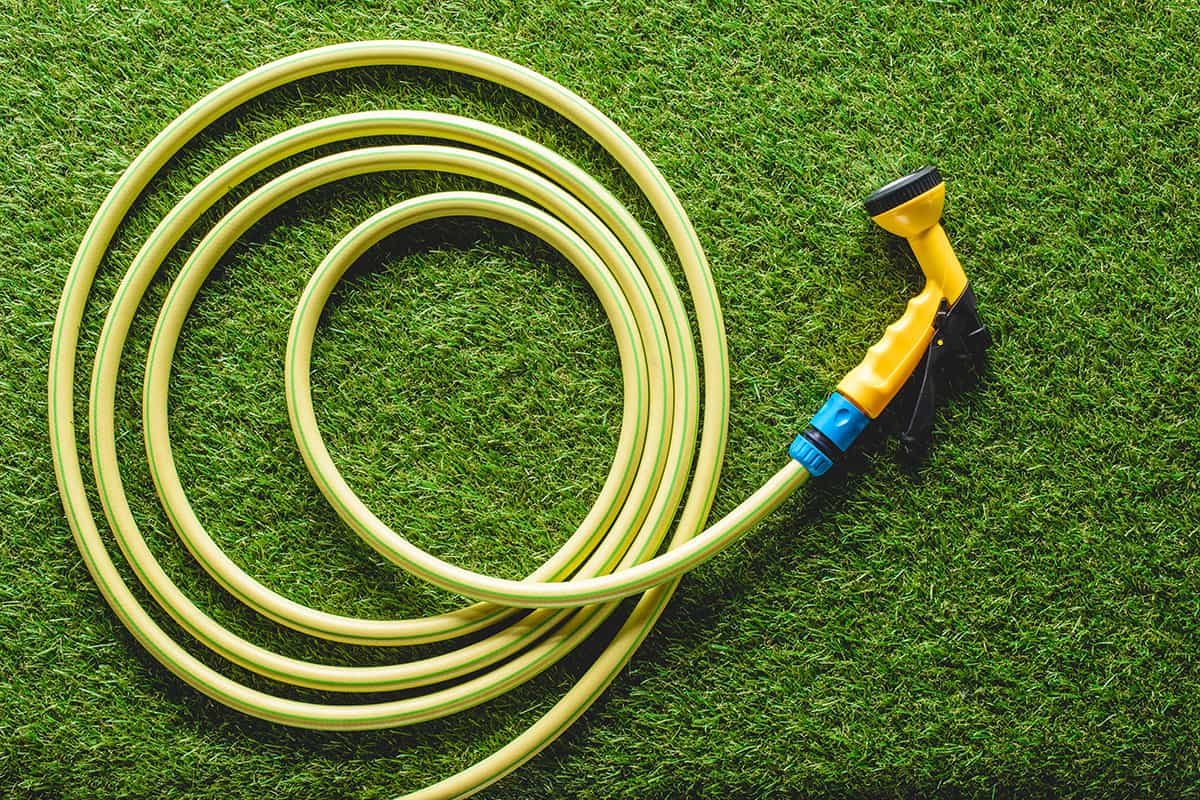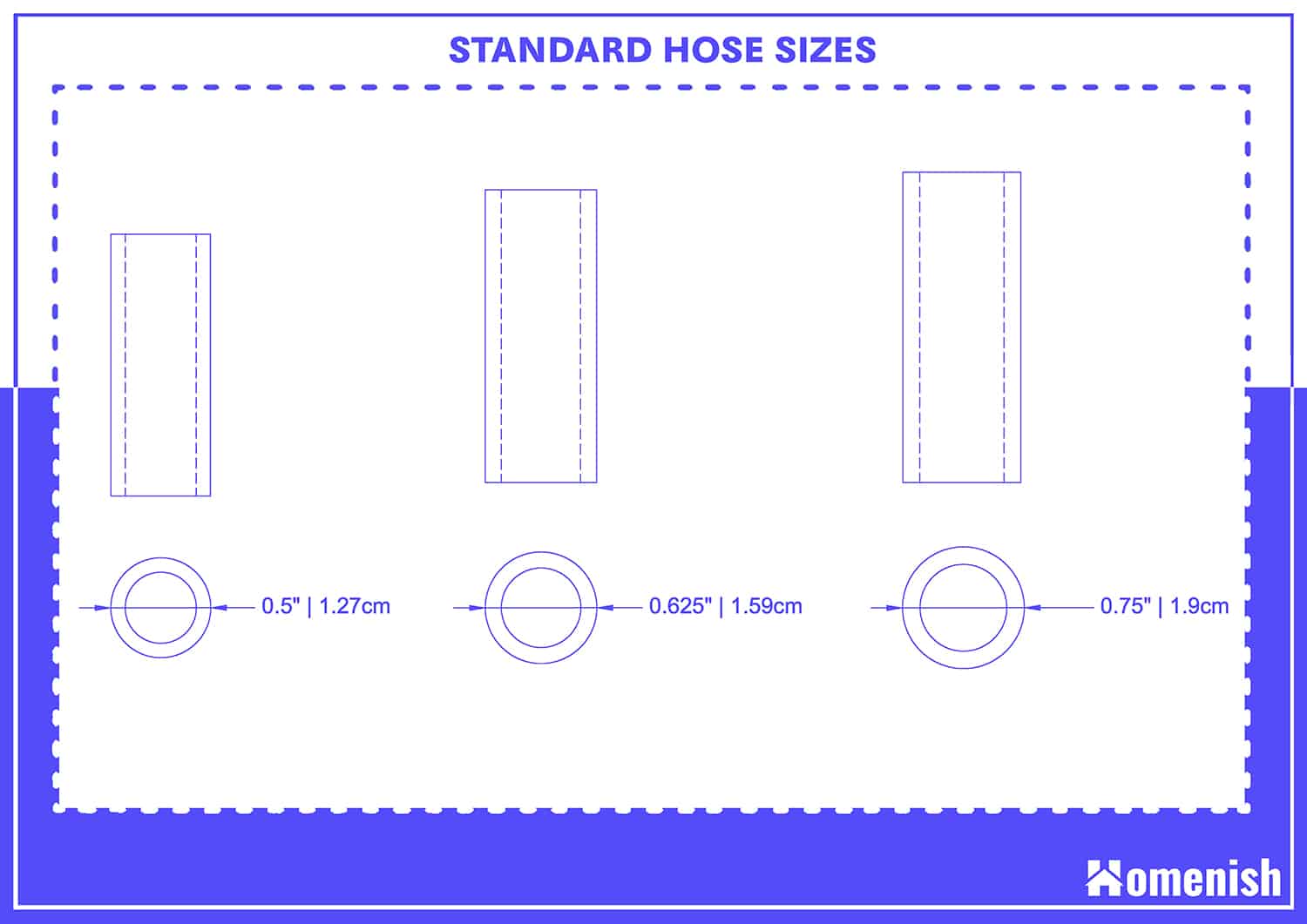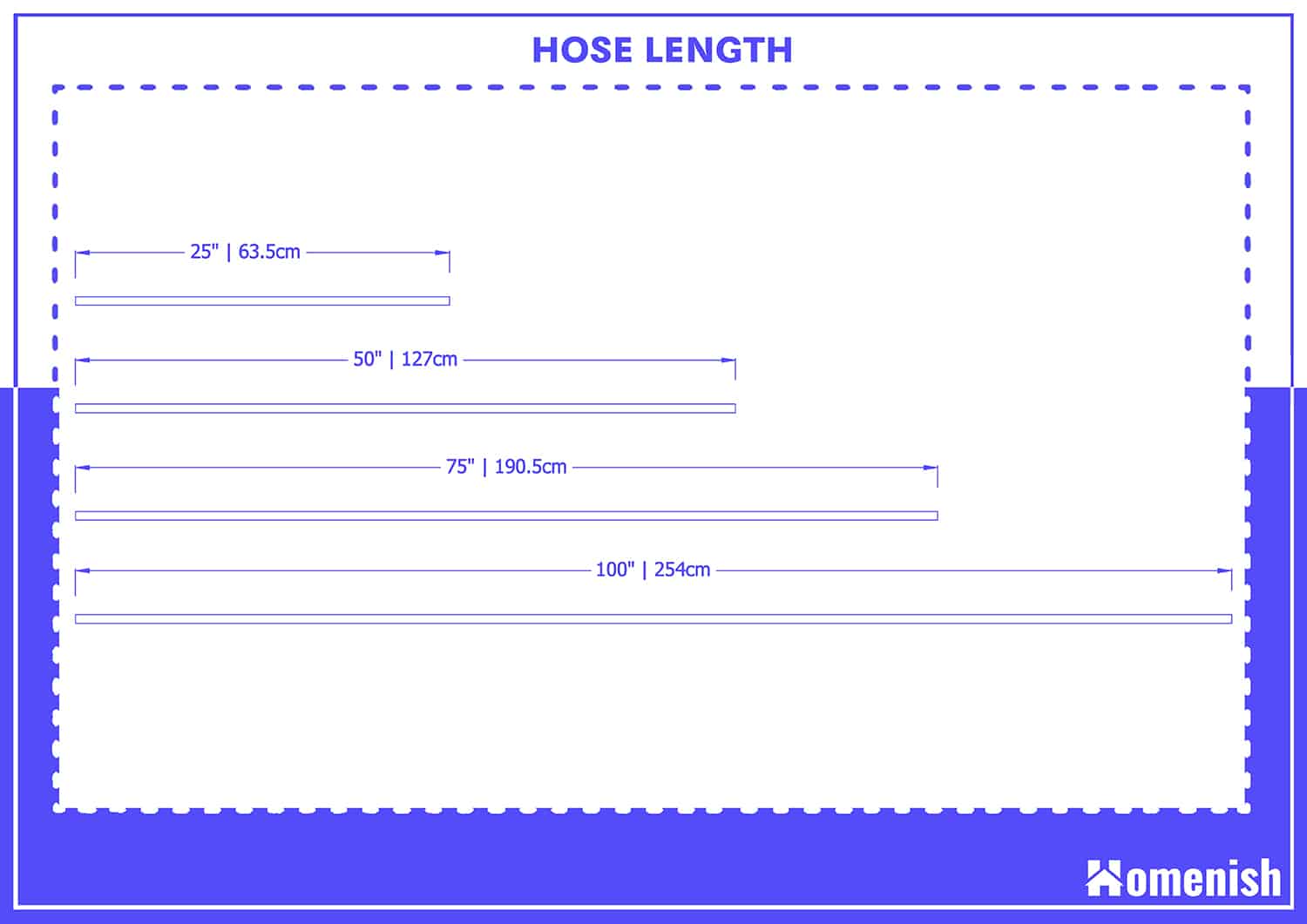Garden hoses are very handy pieces of equipment that most homeowners will need. These can be used for watering the lawn and plants, hosing down a deck or patio, washing vehicles, or cleaning the siding on the home.
Hoses come in a variety of standard sizes, and the size which is most appropriate for you is going to depend on what you most commonly use the hose for, how big your property is, and how physically strong you are. Here we look at the range of standard hose sizes available and what they are best used for.
Standard Hose Sizes
Hose Diameter
The diameter of a hose might seem like an insignificant measurement because the difference in thickness between different hosepipes is seemingly so small.
However, the diameter measurement is going to be the determining factor of how good your water pressure is. This is because obviously, the wider the hose is, the more water is going to be able to flow through it at once. Although the diameter measurements only vary by a very small amount, this is enough to make a significant and noticeable difference when using your hose.
When referring to a hose diameter measurement, what we are talking about is the measurement across the hose if you were to cut a cross-section of the pipe. The diameter goes from one side of the hose to the other, cutting exactly across the midpoint.
Diameter measurements for hoses refer to the interior diameter; therefore, they are a measurement of the space through which the water flows. Therefore when measuring your hose diameter, don’t include the material of the hose in your measurement, and instead, measure the empty space.
½ inch
This is the smallest diameter of hose size widely available to the public. This size of hose is suitable for completing light tasks in the garden, such as watering hanging baskets and plant pots. If you don’t have a huge yard to water and instead have a few pots on your terrace and a few small flower beds, then this size of hose will be perfectly adequate.
However, ½ inch hoses do have the lowest water flow and therefore might become frustrating to use if you have a lot of watering to do. These types of hoses are not suitable for tasks that require high water pressure, for example, in conjunction with sprinklers.
If you want a low-weight hose, then a ½ inch hose is the best option. It is able to carry less water due to the smaller diameter, making it easier to maneuver around the yard and lighter to carry.
⅝ inch
This is the most common size of diameter for a hose. It allows for a good water pressure but is not so powerful that you will be racking up an enormous water bill.
If you walk into any hardware store looking for a new hose, then the chances are that most of the options you see will have a ⅝ inch diameter, and this is the size most likely to be recommended to you. It can be great for small jobs, but it is also handy for when you need that extra bit of water pressure, for example, when cleaning your vehicle.
¾ inch
This is the largest diameter of hose size for gardening hoses, and it is usually reserved for professional use. You may struggle to find a ¾ inch diameter hose in a regular hardware store, but if you search online, you should have more luck in purchasing one of these more specialist-sized hoses.
As the biggest size, this hose allows for the strongest water pressure and is therefore perfect for professional gardeners and landscapers to use because it means they can complete jobs effectively at a faster pace.
Hose Length
Garden hoses are typically sold in lengths of 25-foot increments, typically ranging from 25 feet to 100 feet. Many people make the mistake of choosing the longest hose they can afford, but when it comes to garden hoses, longer is certainly not better.
Shorter hoses offer better water pressure, so the best thing to do when buying a hose is to measure the distance from your outdoor faucet to the furthest point you will need to water and buy a hose in this length.
Don’t be tempted to buy a longer hose because they have several disadvantages. Longer hoses are heavier and therefore more difficult to maneuver around your yard. They can get tangled or more easily caught up on obstacles such as outdoor dining sets and plant pots, making them frustrating to use if you don’t really need the extra length.
Hoses also need to be emptied of water before winter and freezing temperatures set in because if there is water in the body of the hose, then if this water freezes, it will expand and can cause tears and damage to the hose.
The longer a hose is, the more difficult it is to completely empty each fall. Longer hoses also take up a lot more space and require a hefty amount of storage space, whether that be in your garage or on a reel on the back of your home. For all of these reasons, it is best to buy a hose which, at a maximum, is as long as your yard.
If you mostly use your hose for watering plants near to your home, but you will occasionally need a longer hose, then consider buying two shorter hoses, for example, two 50-foot hoses, which can be connected on the rare times you need a longer hose. This will be much more convenient than having to permanently work with a hose that is longer than you regularly have need.
Most homeowners will not need a hose longer than 50 feet, but measure your property to be sure. Hoses which are longer than 100 feet are available, but these are not common, as most people do not require a hose of this length.








